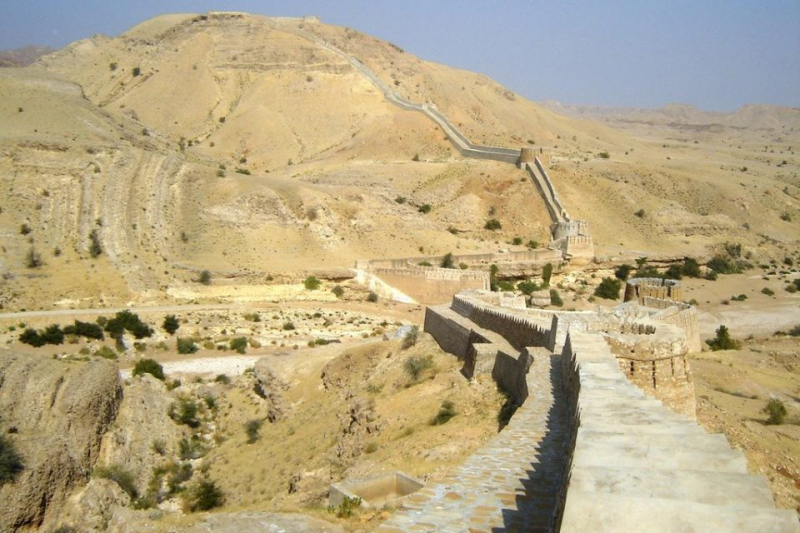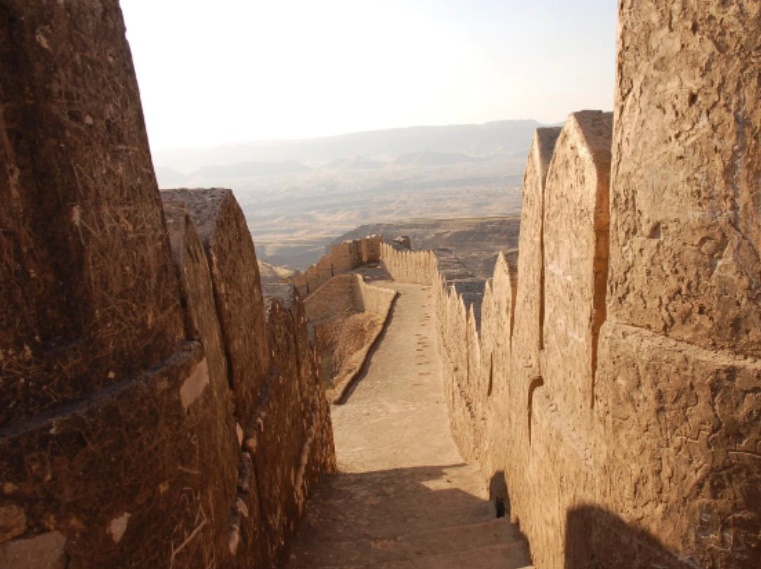Ranikot Fort
Ranikot Fort is a medieval Talpur fort near Sann in Sindh's Jamshoro District. Ranikot Fort, also known as The Great Wall of Sindh, is thought to be the largest fort in the world, with a diameter of around 32 kilometers (20 mi). The ramparts of the fort have been compared to the Great Wall of China.
Archaeologists believe it was built in the 17th century, although Sindh archaeologists now concur that some of the current structures were renovated in 1812 at a cost of 1.2 million rupees by the Talpur dynasty (Sindh Gazetteer, 677).
Ranikot Fort is massive, stretching 31 kilometers (19 miles) and connecting numerous dismal mountains of the Kirthar ranges along contours. The entire fort building is made of stone and lime mortar. The fort is built in a zigzag pattern, with four rhomboid-shaped entry gates. Sann Gate, Amri Gate, Shah-Pere Gate, and Mohan Gate are the four gates. The Sann river crosses two of the gates diagonally; the first gate is on the western side and is bordered by the river water, making it difficult to reach. The southern entrance gate has two doors. There are two niches within the gates with floral decoration and carved stones. The Sann gate is beautifully intact and maybe climbed to reach the fort's peak from both sides for a scenic perspective of the surrounding area. This gate also serves as the entry to the Meeri.
The Pakistan National Commission proposed the property for UNESCO World Heritage designation in 1993, and it has since been on the tentative list of UNESCO World Heritage Sites. As one of the most famous historical sites in Pakistan, Ranikot Fort is protected as a historical site under the Antiquities Act of 1975.
Location: Jamshoro District, Sindh, Pakistan












